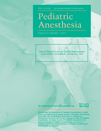Video observation of anesthesia practice: a useful and reliable tool for quality improvement initiatives
Abstract
Aims
Patients with central venous catheters who are transferred out of the Intensive Care Unit to the care of an anesthesiology team for an operation or interventional radiology procedure had excessive rates of catheter associated blood stream infection (CABSI).
Methods
We convened a multi-disciplinary team to audit anesthesia practice and to develop countermeasures for those aspects of practice that were thought to be contributing to CABSI's. It was noted that provider behavior changed in the presence of an auditor (Hawthorne effect) and so videorecordings were used, in the hope that this Hawthorne effect would be reduced. Clips were chosen from the hours of video (without audio) recordings that showed medication administration, airway management and touching the anesthesia cart of equipment/supplies.
Results
These clips were viewed by three observers and measurements were made to assess intra-rater and inter-rater reliability. The clips were then viewed to quantify differences in practice before and after our bundle of “best practices” was introduced.
Conclusions
Although video recording has been used to evaluate adherence to resuscitation protocols in both trauma and in neonatal resuscitation, (Pediatric Emergency Care, 26, 2010, 803; Pediatrics, 117, 2006, 658; Pediatrics, 106, 2000, 654) we believe this is the first time that video has been used to record before and after behaviors for an anesthesia quality improvement initiative.




